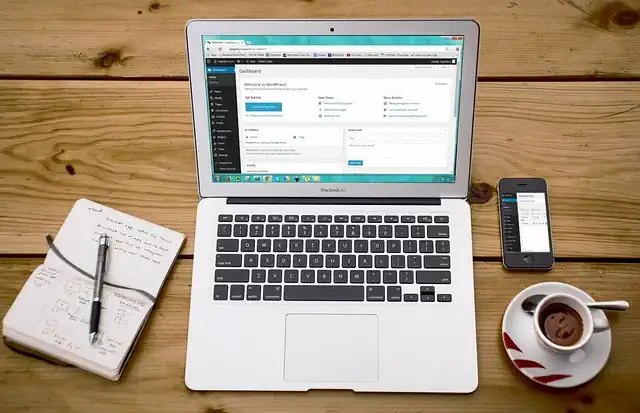Best Way To Save Money Tips
“Unlock the secrets to saving big with our expert tips.”
Introduction
Introduction: Saving money is an essential aspect of financial planning. It helps you to achieve your financial goals, build an emergency fund, and secure your future. However, saving money can be challenging, especially if you don’t have a plan or strategy. In this article, we will discuss some of the best ways to save money and achieve your financial goals. These tips are practical, easy to implement, and can help you save money in the long run.
10 Simple Ways to Cut Your Monthly Expenses
Saving money is a goal that many people have, but it can be difficult to know where to start. Fortunately, there are many simple ways to cut your monthly expenses and start saving money today. Here are 10 of the best ways to save money:
1. Create a budget: The first step to saving money is to create a budget. This will help you see where your money is going and where you can cut back. Start by listing all of your monthly expenses, including rent, utilities, groceries, and entertainment. Then, compare your expenses to your income and see where you can make cuts.
2. Cut back on eating out: Eating out can be expensive, so try to limit the number of times you eat out each month. Instead, cook at home and pack your lunch for work. This will not only save you money, but it can also be healthier.
3. Cancel subscriptions: Do you have subscriptions to magazines, streaming services, or other services that you don’t use? Cancel them and save money each month.
4. Use coupons: Coupons can save you a lot of money on groceries and other items. Look for coupons online or in your local newspaper.
5. Shop around for insurance: Insurance can be a big expense, but you can save money by shopping around for the best rates. Compare rates from different providers and choose the one that offers the best coverage for the lowest price.
6. Use public transportation: If you live in an area with good public transportation, consider using it instead of driving. This can save you money on gas and car maintenance.
7. Cut back on energy usage: Energy bills can be a big expense, but you can save money by cutting back on energy usage. Turn off lights when you leave a room, unplug electronics when they’re not in use, and adjust your thermostat to save on heating and cooling costs.
8. Buy generic: Generic products are often just as good as name-brand products, but they’re usually much cheaper. Look for generic options when you’re shopping for groceries and other items.
9. Use cash: Using cash instead of credit cards can help you save money. When you use cash, you’re more aware of how much you’re spending and you’re less likely to overspend.
10. Negotiate bills: Finally, don’t be afraid to negotiate bills. Call your service providers and ask if they can offer you a better rate. You might be surprised at how much money you can save.
In conclusion, there are many simple ways to cut your monthly expenses and start saving money. By creating a budget, cutting back on eating out, canceling subscriptions, using coupons, shopping around for insurance, using public transportation, cutting back on energy usage, buying generic, using cash, and negotiating bills, you can save money each month and reach your financial goals. So start implementing these tips today and see how much money you can save!
The Ultimate Guide to Couponing for Beginners

Are you looking for ways to save money on your grocery bills? Couponing is a great way to do just that! However, if you’re new to the world of couponing, it can be overwhelming. That’s why we’ve put together this ultimate guide to couponing for beginners.
First things first, start by collecting coupons. You can find them in your local newspaper, online, or even in-store. Make sure to check the expiration date and any restrictions before using them.
Next, organize your coupons. You can use a binder, a coupon wallet, or even just an envelope. Sort them by category, such as dairy, meat, or household items. This will make it easier to find the coupons you need when you’re at the store.
Now it’s time to plan your shopping trip. Look at the weekly ads for your local grocery stores and see what’s on sale. Match up your coupons with the sale items to maximize your savings. Don’t forget to also check for any store-specific coupons or promotions.
When you’re at the store, stick to your list and only buy what you need. Don’t be tempted to buy something just because you have a coupon for it. Remember, the goal is to save money, not spend more.
Another tip is to stack your coupons. This means using a manufacturer coupon and a store coupon on the same item. Some stores even allow you to use multiple coupons on one item, so make sure to check their coupon policy.
If you’re really serious about couponing, consider joining a couponing group or forum. You can share tips and deals with other couponers and learn from their experiences. Plus, it’s a great way to stay motivated and keep up with the latest deals.
Finally, don’t forget to be patient. Couponing takes time and effort, but the savings can be worth it. Start small and gradually build up your coupon collection and skills. Before you know it, you’ll be a pro at saving money on your grocery bills.
In conclusion, couponing is a great way to save money on your grocery bills. By collecting and organizing coupons, planning your shopping trips, and stacking your coupons, you can maximize your savings. Remember to stick to your list and only buy what you need, and consider joining a couponing group or forum for extra support. With a little patience and effort, you can become a couponing pro in no time!
How to Create a Budget and Stick to It
Saving money is a goal that many people have, but it can be difficult to achieve without a plan. One of the best ways to save money is by creating a budget and sticking to it. A budget is a plan for how you will spend your money, and it can help you prioritize your expenses and avoid overspending. In this article, we will discuss how to create a budget and stick to it.
The first step in creating a budget is to determine your income. This includes any money you earn from your job, as well as any other sources of income such as investments or rental properties. Once you have determined your income, you can begin to allocate it to different categories of expenses.
The next step is to determine your expenses. This includes both fixed expenses, such as rent or mortgage payments, and variable expenses, such as groceries or entertainment. It is important to be as detailed as possible when determining your expenses, as this will help you identify areas where you can cut back.
Once you have determined your income and expenses, you can begin to create a budget. Start by listing your income at the top of the page, and then list your expenses in order of priority. This will help you prioritize your expenses and ensure that you are allocating your money in the most effective way possible.
One of the keys to sticking to a budget is to be realistic. It is important to be honest with yourself about your spending habits and to set realistic goals for yourself. If you know that you tend to overspend on certain categories of expenses, such as dining out or shopping, it may be helpful to set a specific budget for these categories.
Another important aspect of sticking to a budget is to track your spending. This can be done using a spreadsheet or a budgeting app, and it can help you stay on top of your expenses and identify areas where you may be overspending. It is important to review your budget regularly and make adjustments as needed.
One of the best ways to save money is by cutting back on unnecessary expenses. This may include things like eating out less often, canceling subscriptions you don’t use, or finding ways to save on your utility bills. By identifying areas where you can cut back, you can free up more money to put towards your savings goals.
Finally, it is important to stay motivated and focused on your savings goals. This may involve setting specific goals for yourself, such as saving for a down payment on a house or paying off debt. It can also be helpful to find a support system, such as a friend or family member who is also working towards their own savings goals.
In conclusion, creating a budget and sticking to it is one of the best ways to save money. By determining your income and expenses, prioritizing your spending, and tracking your expenses, you can stay on top of your finances and achieve your savings goals. Remember to be realistic, cut back on unnecessary expenses, and stay motivated to achieve your goals. With these tips, you can take control of your finances and start saving for the future.
5 Money-Saving Habits to Adopt Today
Saving money is a habit that everyone should adopt. It is not only important for financial stability but also for achieving long-term financial goals. However, saving money can be challenging, especially if you don’t know where to start. In this article, we will discuss five money-saving habits that you can adopt today to help you save money.
1. Create a Budget
The first step to saving money is creating a budget. A budget is a plan that helps you track your income and expenses. It allows you to see where your money is going and helps you identify areas where you can cut back. To create a budget, start by listing all your sources of income and your monthly expenses. This includes rent, utilities, groceries, transportation, and any other bills you have. Once you have a clear picture of your income and expenses, you can start making adjustments to your spending habits.
2. Cut Back on Unnecessary Expenses
One of the easiest ways to save money is by cutting back on unnecessary expenses. This includes things like eating out, buying coffee, and shopping for clothes you don’t need. Instead, try cooking at home, making your coffee, and only buying things you need. You can also look for ways to save money on your bills, such as switching to a cheaper phone plan or negotiating your rent.
3. Set Savings Goals
Setting savings goals is a great way to stay motivated and focused on your financial goals. Start by setting a realistic savings goal for yourself, such as saving 10% of your income each month. You can also set specific goals, such as saving for a down payment on a house or a vacation. Once you have set your goals, create a plan to achieve them. This may involve cutting back on expenses, finding ways to earn extra income, or investing your money.
4. Automate Your Savings
Automating your savings is a great way to make sure you are consistently saving money. This involves setting up automatic transfers from your checking account to your savings account each month. This way, you don’t have to remember to transfer money manually, and you can watch your savings grow over time. You can also set up automatic contributions to your retirement account, such as a 401(k) or IRA.
5. Track Your Progress
Finally, it’s important to track your progress as you work towards your savings goals. This can help you stay motivated and make adjustments to your plan if necessary. You can use a budgeting app or spreadsheet to track your income and expenses, as well as your savings progress. You can also celebrate your milestones along the way, such as reaching a certain savings goal or paying off a debt.
In conclusion, saving money is a habit that everyone should adopt. By creating a budget, cutting back on unnecessary expenses, setting savings goals, automating your savings, and tracking your progress, you can start saving money today. Remember, saving money is a journey, not a destination. It takes time and effort, but the rewards are worth it in the end.
The Benefits of Meal Planning for Saving Money
Saving money is a goal that many people strive for, but it can be difficult to achieve without a plan. One of the best ways to save money is through meal planning. Not only does meal planning help you save money, but it also has many other benefits.
First and foremost, meal planning helps you save money by reducing food waste. When you plan your meals ahead of time, you can buy only the ingredients you need and use them before they go bad. This means you won’t have to throw away food that has gone bad, which can add up to a significant amount of money over time.
In addition to reducing food waste, meal planning also helps you save money by allowing you to take advantage of sales and discounts. When you plan your meals ahead of time, you can look for ingredients that are on sale and plan your meals around them. This can help you save money on your grocery bill without sacrificing the quality of your meals.
Another benefit of meal planning is that it can help you eat healthier. When you plan your meals ahead of time, you can ensure that you are getting a balanced diet with plenty of fruits, vegetables, and whole grains. This can help you maintain a healthy weight and reduce your risk of chronic diseases like heart disease and diabetes.
Meal planning can also save you time. When you plan your meals ahead of time, you can prepare ingredients in advance and have them ready to go when it’s time to cook. This can help you save time during the week when you may be busy with work or other activities.
If you’re new to meal planning, there are a few tips that can help you get started. First, start small. Plan just a few meals at a time until you get the hang of it. Second, be flexible. Don’t be afraid to make changes to your meal plan if something comes up or if you find a better deal on an ingredient. Finally, get creative. Meal planning doesn’t have to be boring. Look for new recipes to try and experiment with different ingredients to keep things interesting.
In conclusion, meal planning is one of the best ways to save money. It can help you reduce food waste, take advantage of sales and discounts, eat healthier, and save time. If you’re looking for a way to save money and improve your health, give meal planning a try. With a little practice, you’ll be a meal planning pro in no time.
Conclusion
Conclusion: In conclusion, there are many ways to save money, but the best way is to create a budget, track your expenses, and cut unnecessary expenses. Additionally, it is important to save a portion of your income regularly and invest in long-term savings plans. By following these tips, you can achieve your financial goals and secure your future.







